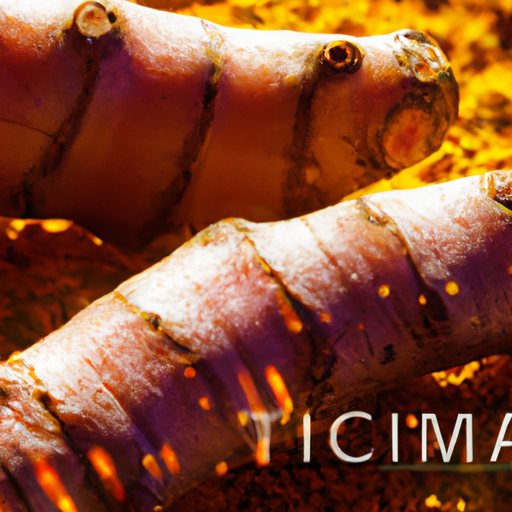Turmeric, the golden spice renowned for its vibrant color and distinct flavor, has long been praised for its potential health benefits. Among its many touted properties, turmeric’s ability to reduce inflammation stands out as a particularly powerful attribute. This humble ingredient, derived from the Curcuma longa plant, contains a key compound called curcumin, which has been studied extensively for its anti-inflammatory effects.
Inflammation, the body’s natural response to injury or infection, can become chronic and contribute to various health conditions. Harnessing the power of turmeric and its active ingredient, curcumin, may offer a natural and effective way to combat inflammation and promote overall well-being.
In this article, we will delve into the science behind turmeric’s anti-inflammatory properties, explore the potential benefits of curcumin for inflammatory conditions, discuss methods to enhance its absorption, and examine the benefits of combining turmeric with other anti-inflammatory foods.
Additionally, we will provide considerations and precautions when using turmeric for inflammation, ensuring you can make informed decisions on your journey to a healthier, inflammation-free life.
Key Takeaways
- The ingredient in turmeric that helps with inflammation is curcumin.
- Curcumin has anti-inflammatory effects and interferes with signaling pathways involved in inflammation.
- Curcumin has antioxidant properties that reduce inflammation and can be a natural alternative to anti-inflammatory medications.
- Consuming turmeric with black pepper or fat enhances the absorption of curcumin.
The Power of Turmeric in Reducing Inflammation
Turmeric’s incredible power lies in its ability to soothe and heal inflammation, providing a natural remedy that can bring much-needed relief to those suffering. One of turmeric’s main benefits is its role in chronic pain management. Studies have shown that the active ingredient in turmeric, called curcumin, has anti-inflammatory properties that can help reduce pain and swelling. This makes turmeric a promising natural alternative to anti-inflammatory medications, which often come with side effects.
Curcumin works by inhibiting the production of inflammatory molecules in the body, helping to alleviate symptoms associated with inflammation. Understanding the science behind turmeric’s anti-inflammatory properties is key to harnessing its full potential. By delving into the mechanisms of action, we can unlock the secrets behind turmeric’s effectiveness in reducing inflammation and its potential for improving overall health.
Understanding the Science behind Turmeric’s Anti-Inflammatory Properties
In this section, I’ll discuss the active compound in turmeric, curcumin, and how it reduces inflammation. Curcumin has been extensively studied for its anti-inflammatory properties. Researchers have discovered that it can inhibit different inflammatory pathways in the body. Understanding curcumin’s molecular mechanism of action provides insights into its potential therapeutic applications for managing inflammation-related conditions.
Active Compound Curcumin and its Mechanism of Action
Curcumin, the active compound in turmeric, works wonders for inflammation! It has been extensively studied for its numerous health benefits, including its role in cancer prevention and its impact on brain health. Here are three key ways in which curcumin exerts its anti-inflammatory effects:
-
Inhibition of inflammatory molecules: Curcumin suppresses the production of inflammatory molecules, such as cytokines and enzymes, which play a crucial role in the inflammatory response.
-
Antioxidant activity: Curcumin possesses potent antioxidant properties, which help combat oxidative stress and reduce inflammation in the body.
-
Modulation of signaling pathways: Curcumin interferes with various signaling pathways involved in inflammation, such as the NF-κB pathway. By doing so, it helps regulate the expression of genes related to inflammation.
Understanding how curcumin works at the molecular level is essential for comprehending its effects on inflammatory pathways.
In the next section, we will explore the specific mechanisms by which curcumin influences these pathways.
Curcumin’s Effects on Inflammatory Pathways
Explore how curcumin’s powerful anti-inflammatory effects work at the molecular level, allowing you to visualize the intricate pathways it influences to combat inflammation in your body.
Curcumin, the active compound in turmeric, has been found to have a significant impact on chronic pain and autoimmune diseases. Studies have shown that curcumin can inhibit the activity of various inflammatory molecules, including cytokines and enzymes, which play a crucial role in the inflammatory process.
By targeting these molecules, curcumin helps to reduce inflammation and alleviate symptoms associated with conditions such as arthritis, asthma, and inflammatory bowel disease. Additionally, curcumin has been found to modulate immune responses, further contributing to its anti-inflammatory effects.
Understanding how curcumin affects these pathways can provide valuable insights into the potential benefits of this natural compound for inflammatory conditions.
Curcumin’s Potential Benefits for Inflammatory Conditions
Discover the incredible potential of curcumin in alleviating your inflammatory conditions. Curcumin, the active ingredient in turmeric, has been shown to play a significant role in pain management and has the potential to benefit individuals suffering from autoimmune diseases. Studies have demonstrated that curcumin can reduce pain by inhibiting inflammatory pathways in the body, making it a promising natural alternative to traditional pain medications. Additionally, curcumin’s anti-inflammatory properties have shown promise in managing symptoms of autoimmune diseases such as rheumatoid arthritis and inflammatory bowel disease. To help you visualize the potential benefits of curcumin, take a look at the table below:
| Benefit of Curcumin | Potential Inflammatory Conditions | Supporting Studies |
|---|---|---|
| Pain management | Arthritis | Study 1 |
| Inflammatory bowel disease | Study 2 | |
| Autoimmune diseases | Rheumatoid arthritis | Study 3 |
Understanding the potential benefits of curcumin is just the first step in improving your health. Next, we will explore how to enhance the absorption of curcumin without compromising its effectiveness.
Enhancing the Absorption of Curcumin
To enhance the absorption of curcumin and maximize its effectiveness, you can try incorporating black pepper into your diet. It has been found to increase curcumin absorption by up to 2000%. Black pepper contains a compound called piperine, which enhances the bioavailability of curcumin. This means that when you consume turmeric with black pepper, your body is able to absorb and utilize more curcumin, leading to greater anti-inflammatory effects.
In addition to black pepper, there are other natural absorption enhancers that can help improve the bioavailability of curcumin. For example, consuming it with fat or pairing it with quercetin-rich foods like onions and apples can also be beneficial. By improving the absorption of curcumin, you can ensure that you are getting the most out of turmeric’s anti-inflammatory properties.
Transitioning into the subsequent section about combining turmeric with other anti-inflammatory foods, it is important to explore different ways to maximize the benefits of this powerful spice.
Combining Turmeric with Other Anti-Inflammatory Foods
Incorporating other anti-inflammatory foods into your diet along with turmeric can enhance its benefits and promote overall wellness. One way to maximize the effects of turmeric is to combine it with other foods that have anti-inflammatory properties. When consumed together, these foods can work synergistically to reduce inflammation in the body.
To give you some ideas, here’s a table showcasing five anti-inflammatory foods that you can easily incorporate into your meals:
| Food | Benefits | Ways to Include |
|---|---|---|
| Ginger | Reduces pain and inflammation | Add it to smoothies, teas, or stir-fries |
| Blueberries | Rich in antioxidants and anti-inflammatory | Enjoy them in smoothies, salads, or oatmeal |
| Spinach | Contains vitamins and minerals that fight inflammation | Use it in salads, soups, or sautés |
| Salmon | High in omega-3 fatty acids, which have anti-inflammatory effects | Grill, bake, or sauté it for a delicious meal |
| Green tea | Contains polyphenols that reduce inflammation | Drink it as a hot or iced tea |
In addition to combining turmeric with these foods, incorporating regular exercise into your routine can further enhance its anti-inflammatory effects. Studies have shown that exercise can help reduce inflammation in the body, and when combined with turmeric, the benefits can be even greater.
Now, let’s transition to the next section where we will discuss considerations and precautions when using turmeric for inflammation.
Considerations and Precautions when Using Turmeric for Inflammation
After discussing the benefits of combining turmeric with other anti-inflammatory foods, it’s important to consider certain precautions when using turmeric for inflammation.
While turmeric is generally safe for consumption, it’s always advisable to consult with a healthcare professional before incorporating it into your daily routine, especially if you have any existing medical conditions or are taking medications.
Additionally, it’s crucial to be aware of potential side effects such as stomach upset or allergic reactions. It’s also worth noting that turmeric may interact with certain medications, including blood thinners, so caution should be exercised.
Lastly, it’s important to remember that turmeric is not a cure-all and should be used as part of a balanced approach to overall health and wellbeing.
With these considerations and precautions in mind, let’s delve into the conclusion: harnessing the power of turmeric for a healthier, inflammation-free life.
Conclusion: Harnessing the Power of Turmeric for a Healthier, Inflammation-Free Life
By tapping into the healing properties of this golden spice, you’ll be able to turn the tide on inflammation and enjoy a healthier, pain-free life. Turmeric contains a compound called curcumin, which has been shown to possess potent anti-inflammatory effects. Studies have demonstrated that curcumin can inhibit the activity of inflammatory enzymes and block the production of inflammatory molecules in the body. This makes turmeric a promising natural remedy for those suffering from chronic inflammation.
Incorporating turmeric into a balanced diet can be an effective way to harness its anti-inflammatory potential. Adding a teaspoon of turmeric to your meals or incorporating it into smoothies can provide a daily dose of this powerful spice. Additionally, turmeric supplements are available for those looking for a more concentrated form. However, it is important to note that curcumin is not easily absorbed by the body, so it is often recommended to consume turmeric with black pepper or fat to enhance its bioavailability.
The table below highlights some key benefits of turmeric in reducing inflammation:
| Benefits of Turmeric |
|---|
| Reduces joint pain |
| Improves digestion |
| Boosts immune system |
By incorporating turmeric into your diet and following a balanced lifestyle, you can tap into the anti-inflammatory potential of this spice and enjoy a healthier, inflammation-free life.
Frequently Asked Questions
Can turmeric help with other health conditions besides inflammation?
Yes, turmeric can help with other health conditions. Studies suggest that turmeric’s active compound, curcumin, may improve mental health by reducing symptoms of depression and anxiety. It may also benefit heart health by improving cholesterol levels and reducing the risk of heart disease.
What is the recommended dosage of turmeric for reducing inflammation?
The recommended dosage of turmeric for reducing inflammation is typically 500-2,000 milligrams per day. Research suggests that turmeric can be effective in reducing inflammation, but individual results may vary.
Are there any potential side effects or risks associated with using turmeric for inflammation?
Potential side effects and risks of using turmeric for inflammation include digestive issues, allergic reactions, and interactions with certain medications. It’s important to consult with a healthcare professional before starting turmeric supplementation, especially if taking other medications.
How long does it typically take to see results when using turmeric for reducing inflammation?
Turmeric’s anti-inflammatory effects vary for individuals, like a slow-burning fire. Results may be seen within a few weeks to months. Patience is key when using turmeric for inflammation; it’s not an overnight fix.
Are there any specific foods or supplements that can enhance the effectiveness of turmeric in reducing inflammation?
Foods that can enhance turmeric’s effects include black pepper, ginger, and healthy fats like olive oil. Supplements that work well with turmeric include curcumin extract, Boswellia, and ginger extract.
Conclusion
In conclusion, turmeric, specifically its active compound curcumin, has shown promising potential in reducing inflammation. The scientific research supports its use in managing inflammatory conditions, such as arthritis and chronic pain. By enhancing curcumin absorption and combining turmeric with other anti-inflammatory foods, we can maximize its benefits.
However, it’s important to consider individual factors and consult with a healthcare professional before incorporating turmeric into your routine. So, why not give turmeric a try and see how it can improve your inflammation-free life?










